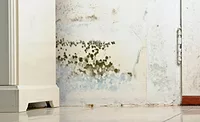Toxic Mold: Dangerous to Your Financial Health
Frankenstein, Dracula and the Bogeyman don’t scare anyone in our enlightened
21st century. The blood-curdling monsters of today bear names like Stachybotrys, Aspergillus, Chaetomium and Pennicillium. Don’t worry about pronouncing them. They go under the simpler terms of fungus or mold, and these denizens of hell get conjured up almost every day by the high priests of black magic otherwise known as trial lawyers.
One of the hottest scams going nowadays in America is toxic mold litigation.
That’s where homeowners and commercial building tenants, egged on by the aforementioned sorcerers, sue everyone in sight over real or imagined ailments induced by fungal growth resulting from moisture in confined spaces. All that’s needed to enact a massive redistribution of wealth from hard-working folks to the parasite class is a sick person, a slick lawyer, a gullible jury — and a medical “expert” or two of dubious credentials and motives able to point not necessarily to proof, but to a plausible case of mold infection.
Almost everyone gets exposed to mold in the home or at work from time to time. Not all strains are toxic, and casual exposure to toxic strains can be shrugged off by the average person except when someone has a particular allergy. A tiny percentage of people do get seriously ill from allergic reactions to certain strains of mold, just as there are people allergic to common food products and other household substances. These people have to take precautions to avoid exposure to these substances, but it would be ridiculous for someone allergic to, say, peanut butter to sue everyone who makes, sells and consumes a product found in most American homes. Mold is just about as ubiquitous as peanut butter. What’s more, all strains, toxic or not, can be removed by combining bleachy household cleansers with a little elbow grease.
I know this from personal experience. Several times a year my wife gets out a spray bottle of nasty smelling disinfectant and points me toward our bathroom. Next time she messes with me when there’s a football game on, I just might sue her for recklessly exposing me to the musty demons from hell. There is not the slightest doubt I could find some panting litigator willing to represent me.
Roofing Contractors at Risk
In a more sensible world, all this would have nothing to do with this magazine’s audience of noble people who put roofs over the heads of a population that would otherwise have to suffer the elements or find a cave to dwell in. However, occasionally those roofs leak, or at least are alleged to do so. Moisture that seeps into a home or building can serve as a breeding ground for the organisms capable of making a tiny percentage of people miserable. Even more to the point, people in the roofing business usually have assets that trial lawyers would prefer to see in their own coffers.Toxic mold litigation really got trial lawyers’ attention last year when a jury in Texas awarded a wealthy family $32 million, payable by Farmers Insurance Co. This was on top of $1.4 million in remediation costs paid by Farmers prior to the award. The company has since dropped out of mold coverage, as have many other home insurers. They now tend to categorize mold as a form of pollution, which most policies exclude from coverage.
Home insurance companies aren’t the only ones caught up in the litigation. Frequently toxic mold gets thrown into the soup of construction defect litigation, another trial lawyer con game. Architects, engineers, builders, GCs and subcontractors from various trades, along with manufacturers, suppliers, and of course the insurers, typically get named in these lawsuits as fingers point every which way. In the case of moisture, it’s often difficult to pinpoint the source. Nor is it clear how to apportion blame among inadequate building materials, design or installation flaws, or simply poor housekeeping.
One would think that if you put up roofs that don’t leak, you ought to be immune to toxic mold lawsuits. Don’t bet on it. Lawyers with forked tongues can bend truth, justice and the laws of nature into unrecognizable shapes when arguing who’s to blame. Ironically, mold growth in today’s world tends to be enhanced not by poor construction, but by work done right to provide an airtight, energy-saving indoor environment. Ventilation tends to inhibit fungus development.
Even if you don’t get sued, you’re still paying a steep price. If you haven’t renewed your general liability policy recently, brace yourself for a big shock. Premium increases in the 20- to 30-percent range are the norm, even more for companies with poor loss results.
What to Do About It
I would like to conclude this piece with some uplifting advice about how to avoid getting caught up in the toxic mold lunacy. I could say, be sure to build roofs that don’t leak, although I suspect you may already strive to do that.The sad truth is that toxic mold litigation is one of those aggravations of modern life that can jump up and bite you no matter how well you perform your work and cover your anatomy. It’s worthwhile having a conversation with your insurance carrier to make sure you’re covered for toxic mold claims, and to clarify circumstances that might jeopardize the coverage. It also provides one more incentive for dealing with materials suppliers you can trust to stand by their products and back you up in the event of unwarranted lawsuits.
And, you can work with your trade association to enact product liability reform at the federal and state levels.
Beyond that, better think twice about doing work for anyone with a trial lawyer in the family.
Looking for a reprint of this article?
From high-res PDFs to custom plaques, order your copy today!







